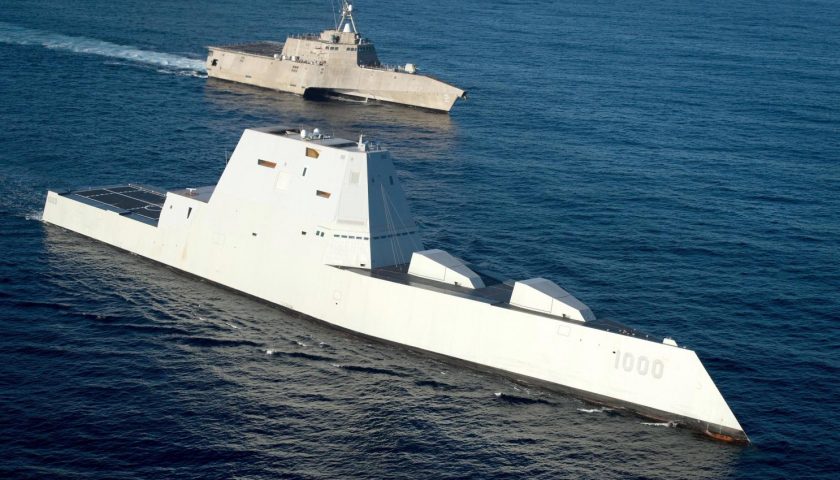While the competition between the West and the Sino-Russian bloc becomes increasingly fierce on the international scene, numerous simulations carried out in recent years show that despite Western defense spending 6 times greater than that of the China and Russia combined, the latter continue to increase their relative military power, to the point of probably overtaking their competitors in the decade to come. We can naturally be tempted by trivial explanations, such as the very different labor costs between countries, or the much firmer control that these regimes impose on their respective populations. However, these explanations alone cannot explain such discrepancies, nor the difficulties that Western democracies face in getting on par with Moscow or Beijing. Indeed, beyond the purely external and structural causes linked to the nature of these competitors, it appears that the Western defense effort is today severely handicapped by 4 phenomena that have appeared gradually over the years, and which now heavily influence the the very effectiveness of this effort, to the point of neutralizing the budgetary advantage they have. These 4 abuses represent, in fact, today, major and difficult obstacles to overcome in order to allow Western countries to put themselves on an equal footing with Beijing and Moscow in this new geostrategic environment which is emerging.
1- Defense Technologism
If it is undeniable that technology has played, and will continue to play, a determining role in conflicts, the temptation is naturally strong to increase the technological role in military action as much as possible in order to hope for a substantial advantage. Beyond a certain point, however, this desire transforms into a conviction, even a paradigm, to become a real technologist drift, in which faith in new technologies supplants all other considerations. This certainty leads to a real conceptual obfuscation of the constraints linked to the implementation of these technologies adorned with all the virtues, whether in terms of costs and availability of materials, or direct vulnerabilities induced by them. Over recent decades, numerous examples of this drift have been observed, whether of the 3 Zumwalt class cruisers of the US Navy supposed to revolutionize naval warfare, and whose main weapon system, the 155 mm Advanced Gun System, is inoperative due to the pharaonic costs of each shot approaching a million $, or the thirty or so Littoral Combat Ship whose operational capacities do not allow them to be deployed in a combat zone. In total, these two programs will have cost American taxpayers the equivalent of 45 frigates of the new Constellation class, which today are seriously lacking in the US Navy to contain the rise in power of the Chinese and Russian navies.

But the most representative example of this drift undoubtedly remains the Joint Strike Fighter program which gave birth to the Lockheed Martin F35, a combat aircraft supposed to technologically surpass all existing combat aircraft and standardize support for land-based aircraft as well. , on aircraft carriers and on helicopter carriers, and whose advanced stealth was to produce a decisive advantage in combat. In the end, today, while the device has not yet reached full industrial production, nor its operational reference standard, it appears that the excessive technological decisions which gave rise to it did not take into account certain constraints induced by its choices, such as in terms of maintenance or aeronautical performance; have, voluntarily or not, heavily underestimated the costs of implementing the device; and have seriously overestimated the effectiveness of the passive stealth implemented, while potential Russian and Chinese adversaries are now intensively deploying detection systems capable of countering this, even at great distances, such as low-speed radars. frequencies and passive radars.
In the end, far from representing a decisive asset, the technologism which gave birth to these programs, but also to numerous others, will have severely eroded the investment and modernization capacities of the American armies, and by transitivity, of many Western armies, forcing the US Air Force to rethink its modernization plan, and consider replacing its own F16s with a new less complex and above all less expensive device, instead of the F35A. We will also note, today, that this same unshakeable faith that the US armies had in stealth only a few years ago, is found in the concept of cooperative engagement and communication, the Joint All Domain Cooperation, or JADC, again presented by the US Army as well as the US Air Force and the US Navy as the Alpha and Omega of military effectiveness in the face of the rise of Chinese power in the Pacific . However, it seems a little quickly forgotten, in passing, that the Chinese Armies also implement a comparable doctrine, and that its supposed effectiveness is only valid if we have the supremacy of the waves to maintain operational communications, a domain in which precisely Russians and Chinese are investing intensively.
2- The Defense effort as Public Policy

75% of this article remains to read,
Subscribe to access it!
The Classic subscriptions provide access to
articles in their full version, and without advertising,
from 6,90 €.
Newsletter subscription
Register for the Meta-Defense Newsletter to receive the
latest fashion articles daily or weekly

